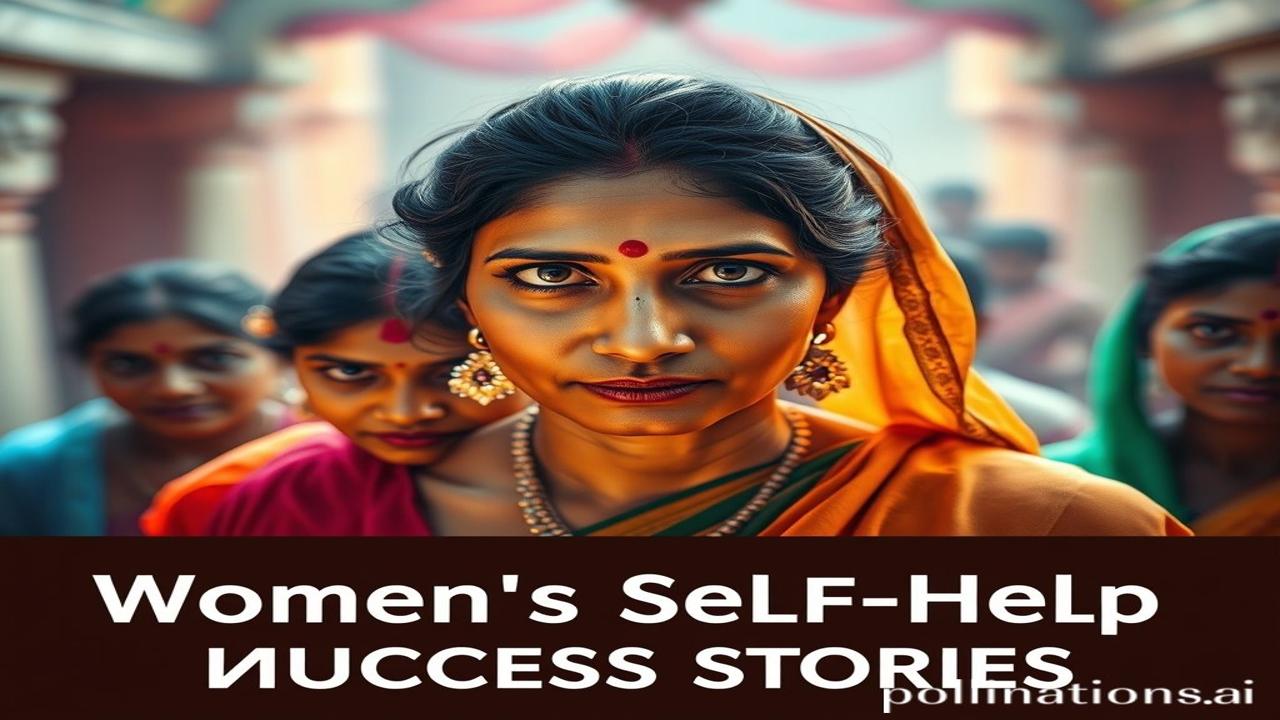Auraton Ki Udaan: Self-Help Se Safalta Ki Kahaniyan (Women’s Self-Help Movement Success Stories)
“Kabhi socha hai, woh haathon ki lakirein, jo sirf kismat nahi, himmat bhi likhti hain? Kuch aisi hi lakiron ne milkar, ek nai subah ki shuruwat ki.”
Imagine the scent of jasmine and turmeric, hanging heavy in the air as women gathered under the banyan tree. Not for gossip, but for shakti, for power. This is the story of India’s women’s self-help movement, a tapestry woven with threads of resilience, determination, and a shared dream of a brighter future.
Itihasic Prishthbhoomi: Roots of Empowerment
So, what is this “self-help movement” anyway? Basically, it’s about women coming together, forming small groups, pooling their savings, and supporting each other to start small businesses, gain access to credit, and improve their lives. Think of it as a homegrown economic revolution, spearheaded by the very people who were often left out of the formal financial system.
This wasn’t a single event; it’s been an evolving process, really picking up steam in the late 20th century. We’re talking about the 1970s and onwards. Andhra Pradesh, in particular, became a hotspot, with pioneering programs like the Development of Women and Children in Rural Areas (DWCRA) laying the groundwork.
Why is it important? Well, for centuries, women in many parts of India faced significant economic and social barriers. They lacked access to education, property rights, and financial resources. The self-help movement provided a pathway for them to break free from these constraints, gain financial independence, and have a stronger voice in their communities. This isn’t just about money; it’s about izzat, dignity, and the ability to shape their own destinies.
The Seeds of Change: Early Initiatives
While the late 20th century saw its major boom, the concept of women helping women isn’t new. Think about the informal kitty parties that women organized for generations – sharing resources and providing mutual support. These were the seeds from which the formal self-help groups sprouted.
Zameeni Sach: Log Aur Jeevan – Real People, Real Stories
Imagine Lakshmi, a farmer’s wife from a small village in Rajasthan. Her life was a cycle of dawn-to-dusk labor, barely enough to feed her family. Then, she joined a self-help group.
“Ma’am,” she told me during a research trip, “pehle toh mujhe laga yeh sab bekaar hai. Par phir dekha, dusri auratein bhi hain jo meri tarah hain. Humne milkar paisa bachana shuru kiya, aur phir loan lekar bakriyan kharidi.”
Lakshmi used the loan to buy goats, whose milk she sold in the nearby town. Slowly, her income increased. She was able to send her children to school and even build a small brick house. Lakshmi’s story is not unique. Thousands of women across India have experienced similar transformations through these groups.
From Aangan to Bazaar: The Journey of Empowerment
The journey wasn’t always easy. There were societal obstacles, skepticism from family members, and the constant struggle to balance household responsibilities with business ventures. But the collective strength of the group provided the support and encouragement needed to overcome these challenges. The aangan (courtyard) became a classroom, and the local bazaar a place of opportunity.
Dharohar Aur Pehchaan: Echoes in Modern India
Even today, the spirit of the women’s self-help movement resonates across India. You see it in the vibrant handloom cooperatives, the bustling street food stalls run by women entrepreneurs, and the increasing number of women in leadership positions.
This isn’t just about economic empowerment; it’s about redefining Bharatiyata. It’s about recognizing the inherent strength and resilience of women and providing them with the opportunity to contribute their talents to the nation’s growth. The movement has strengthened social cohesion, promoted gender equality, and fostered a sense of community ownership. It’s a vital part of our cultural fabric.
Mazedar Tathya Ya Bhram-Bhanjak: Fun Facts and Myth-Busters
Myth: Self-help groups are only for women in rural areas.
Reality: While the movement started in rural areas, it has spread to urban centers as well, catering to the needs of women from diverse backgrounds.
Fun Fact: Many self-help groups have successfully ventured into non-traditional sectors, such as renewable energy, IT services, and even eco-tourism!
Drishya Aur Bhavnayen: A Sensory Tapestry
Imagine the sound of women singing devotional songs as they weave intricate designs on handlooms. Feel the rough texture of the khadi fabric, a symbol of self-reliance and national pride. Smell the aroma of freshly cooked spices in a women-run restaurant. The senses come alive in these spaces, reflecting the energy and passion of women who are transforming their lives.
Antim Vichar Ya Uddharan: Closing Insight
The women’s self-help movement is a testament to the power of collective action and the indomitable spirit of Indian women. It’s a reminder that even in the face of adversity, hope and empowerment can bloom.
“Yatra naryastu pujyante, ramante tatra devata,” – Where women are honored, divinity blossoms. Let us continue to honor and support the women who are shaping a brighter future for India.
